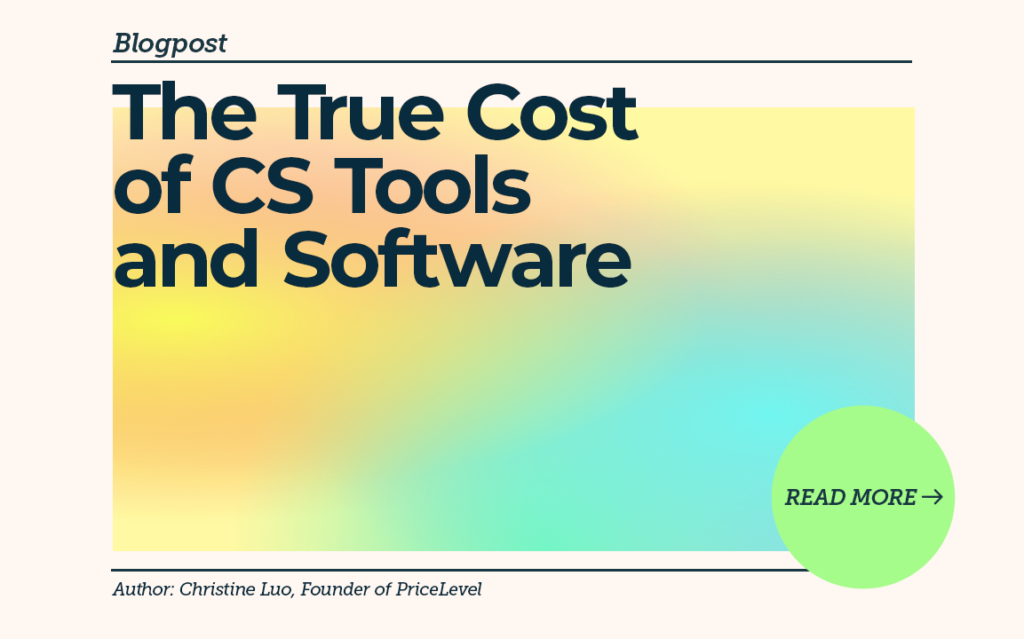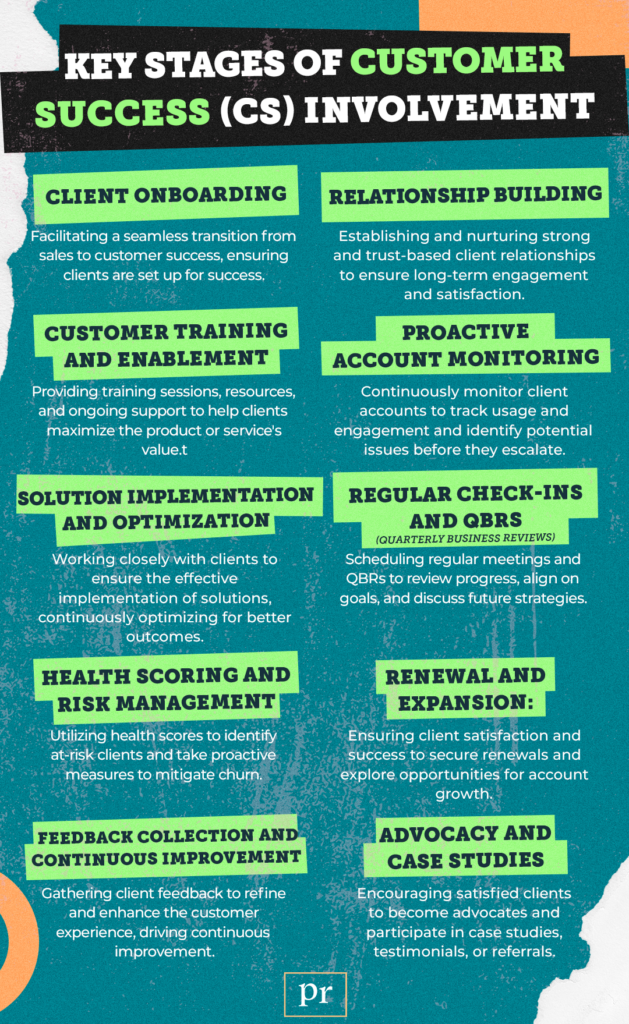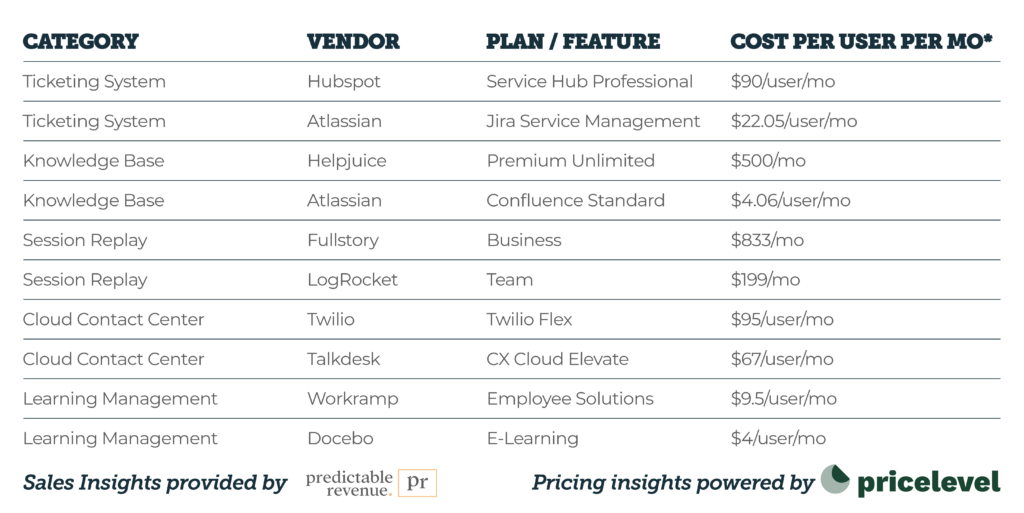The True Cost of CS Tools and Software

Author: Christine Luo, Founder of PriceLevel
Welcome back to the last post in our series, where we explore the true cost of a deal by examining the tools and software costs associated with each role in the sales process. Predictable Revenue and PriceLevel have partnered to provide pricing transparency and a deeper understanding of the cost structures in the sales tech stack. So far, we’ve decoded the actual cost of SDRs, AEs, and AM’s. In this last edition, we’ll dive into Customer Success or CS.
This vital link between the company and its customers goes by many names – Customer Success, Customer Service, Customer Experience, etc -. Still, no matter the name, the role is pivotal in keeping customers happy and engaged. Their ultimate goal is to foster long-term customer relationships, reduce churn, increase retention, and advocate for customers within the company.
This demanding and collaborative role often uses a variety of tools, both customer-facing and internal. To highlight the true cost of the CS tech stack, we’ve created fictional case studies using a 10-person customer success team and a 100-person customer success team.
Role and responsibilities of CS
Customer success employees are the main point of contact between the customer and the company. They ensure customers achieve their desired outcomes by guiding them through onboarding, training, and offering ongoing support to maximize product adoption. They proactively monitor customer health, address concerns, and collaborate with internal teams to align product offerings with customer needs. Their primary goal is to foster long-term customer relationships, reduce churn, and drive satisfaction and loyalty.

To achieve this goal, CS employees organize their day around proactive and reactive communication with their customers. They use regular check-ins to address questions or issues, gather feedback for internal teams, and provide detailed information about products or services. CS employees are responsible for reactively answering customer inquiries using phone, email, or chat to troubleshoot problems. During down periods, a CS team will analyze customer data to monitor usage patterns and identify opportunities for further engagements they may pass on to the sales team.
The CS team typically uses metrics that revolve around the effectiveness of their efforts and the health of the customer relationships they manage.
Examples include, but are not limited to:
- Percentage of customers retained or customers churned
- Customer Satisfaction (CSAT) or Net Promoter Score (NPS)
- Product adoption rate
- Dollar of customer lifetime value
A Customer Success employee is typically compensated through base salary and performance-based incentives. The base salary reflects their role in customer engagement and retention. At the same time, bonuses or commissions are often tied to specific metrics such as customer retention rates, customer satisfaction scores (e.g., NPS or CSAT), and upsell or cross-sell revenue. Some companies also offer stock options or equity as part of the compensation package, especially in tech companies, to align employee success with long-term growth.
The CS tech stack
In order to keep customers happy and engaged, CS employees rely on a variety of tools to proactively and reactively communicate with customers, stay up to date on new product releases, and collaborate with internal tools. A common CS tech stack includes:
- Ticketing system – Hubspot Customer Service Hub and Jira Service Cloud are examples of platforms used to track, manage and resolve customer support requests. CS employees use these to facilitate communication and workflow management across teams effectively.
- Knowledge management base tools – there’s knowledge management tools like Confluence or Helpjuice that allow companies to create, organize, and share information and resources with employees or with customers as well.
- Session replay platforms – CS teams can reproduce a customer’s problem by rewatching their session by using tools like Fullstory or Logrocket
- Contact center tools – as CS teams move away from hardware phones towards cloud contact centers, providers like Twilio Flex, Talkdesk, or Dialpad let customers connect instantaneously with the help they need
- Learning management systems – platforms like Docebo and WorkRamp allow CS teams to continue being educated about new products and bug releases so that they can provide detailed information to customers as they reach out
Depending on the team size and usage level, this tech stack can vary wildly in cost. Unfortunately, it’s difficult to find public pricing for many of these tools to understand the true cost, but fortunately, PriceLevel has pricing comps and negotiated discounts that other buyers have actually gotten for their CS tech stack.
Decoding the cost of CS tools and software
We’ll use fictional case studies for a 10-person customer success team and a 100-person customer success team to understand the true cost of the CS tech stack. First, let’s set the baseline cost for these CS tools:

*Prices actual buyers pay for these vendors. Cost is for an annual subscription. Source: PriceLevel
The true cost of the CS tech stack: 10-person customer success team
Growing CS teams often utilize vendors specializing in smaller businesses or lower tiers of the vendors that large CS teams use. This allows companies to grow into more expensive tiers. To build this fictional case study for the 10-person customers’ success team, we’ll mostly use a mix of both:

Source: PriceLevel
At a 10-person customer success team, the annual true cost of the CS tech stack is $20,041 or $2,004 per CS employee.
The true cost of the CS tech stack: 100-person customer success team
The pricing becomes more opaque once the CS team hits an enterprise scale. The benefit is that larger teams get volume discounts, so the per CS employee costs decrease and often mimic that of a smaller team. For this example, we’ll build the CS tech stack using the highest tiers for each vendor:

Source: PriceLevel
At a 100-person customer success team, the annual true cost of the CS tech stack is $254,268 or $2,543 per CS employee.
Conclusion
When looking at CS tools, there are minimal per-person cost differences between the 10-person customer success team versus the 100-person one. Any cost increase that comes with an enterprise product tier gets distributed by the increased headcount. Investing in the tech stack is vital to the success of a CS team. The best tools give a CS employee the best chance to communicate with customers effectively and efficiently and keep them engaged and renewing.
In this series, we explored the true cost of tools and software necessary for a full deal cycle. From a potential client and SDR tools to a happy customer replying to a CS team check-in, software can multiply every team member’s impact on sales and customer success. The lack of pricing transparency makes it extremely difficult to budget the right amount, but with PriceLevel, you can see verified software prices from current and former customers.
